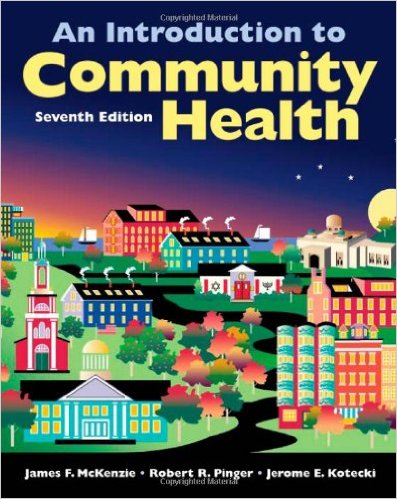Description
Test Bank For An Introduction To Community Health 7th Edition By James F Robert R
Chapter: Chapter03 True/False
1. A primary care physician is concerned with the course of a disease in an individual, while an epidemiologist is concerned with the course of disease in a population.
Ans: True
Page: 63
2. An unexpectedly large number of cases of an illness, specific health-related behavior, or other health-related event in a particular population defines a pandemic.
Ans: False
Page: 64
3. An endemic disease is one that occurs regularly in a population as a matter of course.
Ans: True
Page: 64
4. People afflicted with a disease are referred to as cases.
Ans: True
Page: 66
5. The rate of an illness in a population is the natality rate.
Ans: False
Page: 66
6. A disease that lasts three months or less is a chronic disease.
Ans: False
Page: 67
7. An attack rate is an incidence rate calculated for a particular population for a single disease outbreak and is expressed as a percentage.
Ans: True
Page: 68
8. The electronic reporting system used by state health departments and the CDC to report notifiable disease is Morbidity and Mortality Weekly Report (MMWR).
Ans: False
Page: 70
9. Notifiable disease information reported to local health departments is highly accurate.
Ans: False
Page: 70
10. Sometimes notifiable diseases are not reported to the local health department because patients recover without a diagnosis being confirmed.
Ans: True
Page: 70
11. The average number of years a person from a specific cohort is projected to live from a given point in time is their life expectancy.
Ans: True
Page: 76
12. The number of years of healthy life expected, on average, in a given population is the disability-adjusted life years (DALYs).
Ans: False
Page: 78
13. Vital statistics are statistical summaries of records of major life events such as births, deaths, marriages, divorces, and infant deaths.
Ans: True
Page: 81
14. An epidemiological study aimed at testing hypotheses is a descriptive study.
Ans: False
Page: 84
15. The period between exposure to a disease and the onset of symptoms is the incubation period.
Ans: True
Page: 86
Multiple Choice
16. An epidemic curve depicting a distribution of cases traceable to multiple sources of exposure is a
A) point source epidemic curve
B) propagated epidemic curve
C) case control study
D) descriptive study
Ans: B
Page: 86
17. A probability statement about the association between a particular disease and a specific risk factor is
A) an odds ratio
B) relative risk
C) criteria of causation
D) an epidemic curve
Ans: A
Page: 88
18. When using criteria of causation, the criterion that addresses the issue of whether the association been reported in a variety of people, exposed in a variety of setting, and can have repeatable results by other researchers is
A) strength
B) specificity
C) temporality
D) consistency
Ans: D
Page: 90
19. When using criteria of causation, the criterion that asks if the disease or health problem associated with the exposure is the only one is
A) strength
B) specificity
C) temporality
D) consistency
Ans: B
Page: 90
20. Epidemiology is sometimes referred to as
A) population medicine
B) personal medicine
C) standardized medicine
D) pandemic medicine
Ans: A
Page: 63
21. An outbreak of disease over a wide geographic region is a(n)
A) epidemic
B) pandemic
C) epizootic
D) endemic
Ans: B
Page: 64
22. The number of events that occur in a given population in a given period of time is a
A) rate
B) case
C) pandemic
D) notifiable disease
Ans: A
Page: 66
23. The number of new and old cases of a disease in a population in a given period of time, divided by the total number in that population is the
A) incidence rate
B) attack rate
C) prevalence rate
D) crude rate
Ans: C
Page: 67
24. Morbidity rates measure
A) birth
B) death
C) sickness
D) life expectancy
Ans: C
Page: 67
25. The book, published annually, that is the standard summary of statistics on the social, political, and economic organization of the United States is
A) the U.S. Census
B) the Statistical Abstract of the United States
C) the New England Journal of Medicine
D) the National Health Interview Survey
Ans: B
Page: 80




Be the first to review “Test Bank For An Introduction To Community Health 7th Edition By James F Robert R”